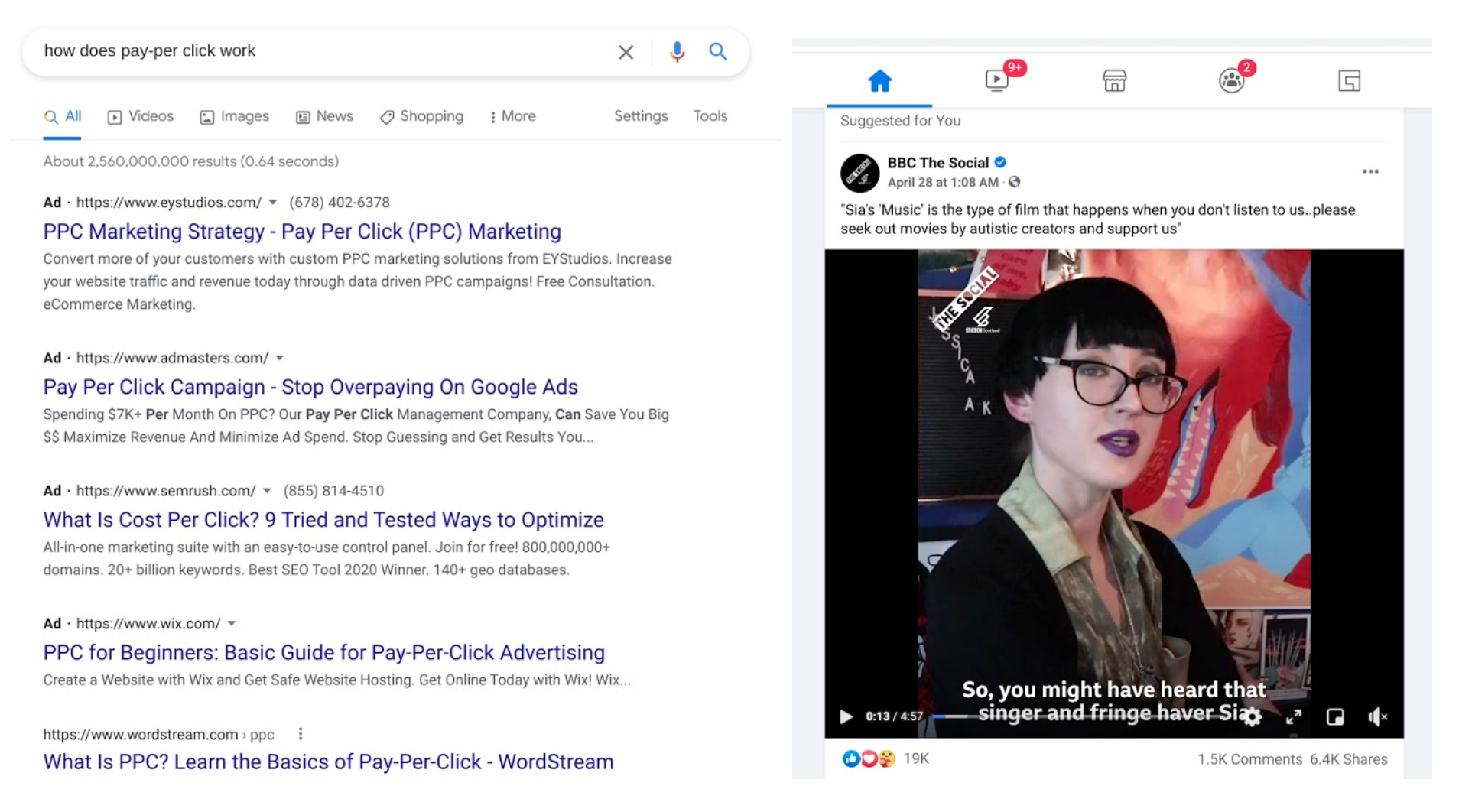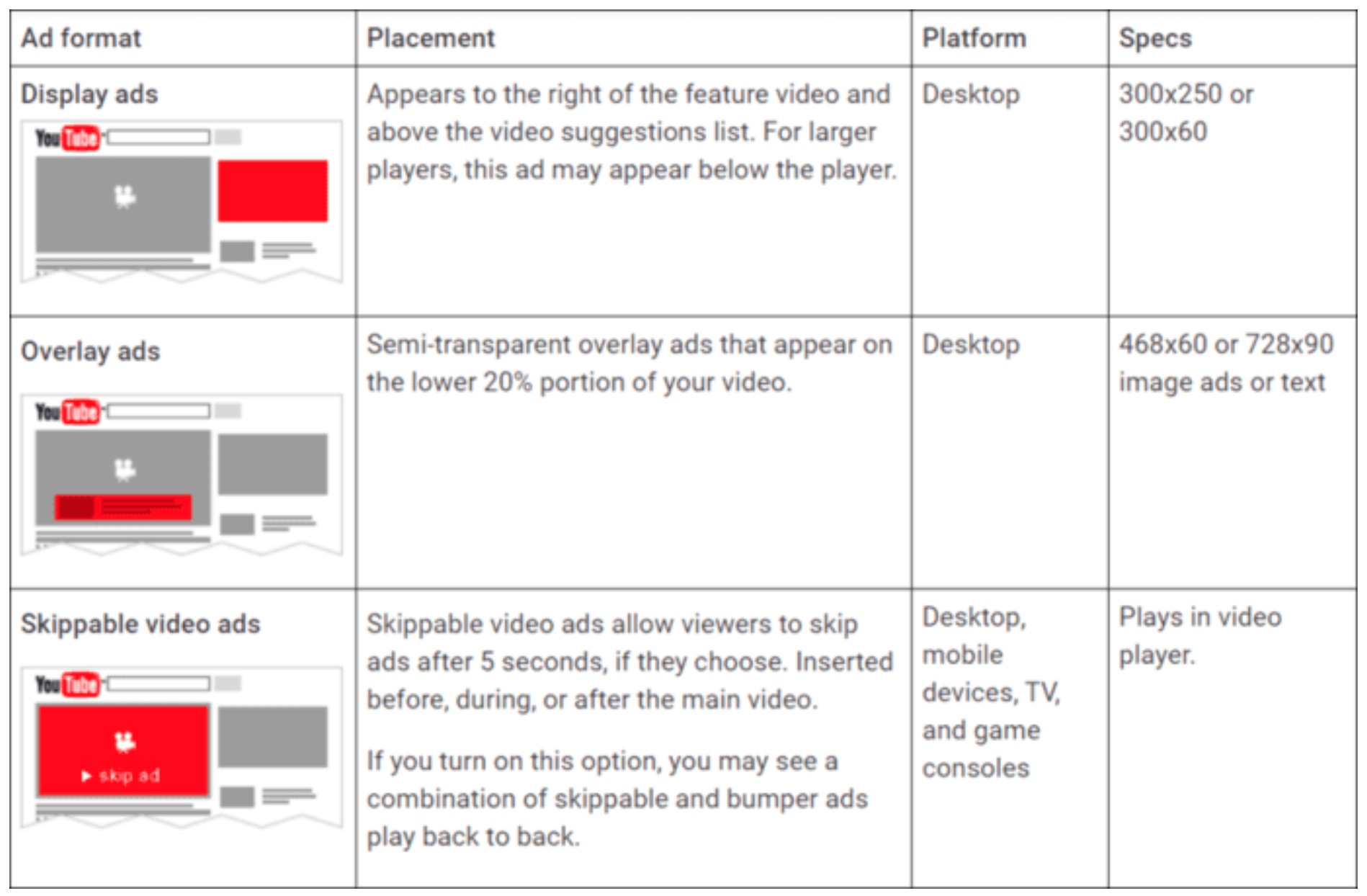Searching or scrolling the internet inevitably means coming across a list of paid advertisements before getting to any organic content. Or, finding sponsored ads peppered throughout your social feed.
Sometimes they’re exactly what you’ve been looking for, or the ads answer a question that you’ve been asking — so you click.
An advertiser paid for you to find their result interesting enough to interact with.
That type of marketing is called PPC. And the price associated with clicking on PPC ads is CPC. Not sure what those acronyms mean?
Let’s dive in.
PPC vs CPC: What’s the Difference?
Pay-per-click, or PPC, is a method of paid online advertising where businesses only pay for an ad placement after it is clicked on. These ads predominately appear at the top of search engine results pages (SERPs) or while scrolling through social media.
Cost-per-click, or CPC, is the term that stands for the total cost of each click.
PPC vs CPC Example
You’re a marketing strategist and you want your business to gain more traction online. After doing some research, you find that paid advertising is a great way to quickly get customers to your website.
One method in particular that you come across is PPC advertising.
A well-placed PPC marketing ad will increase new acquisitions and improve your SERP presence more quickly vs search engine optimization (SEO). SEO can help you rank higher on search engines organically, but it takes more time.
As a result, you write up ad copy and landing pages to bid for key phrases that will show up at the top of Google SERPs. These ads navigate to optimized landing pages that answer the search query your customers are looking for.
For example:
You decide to run your PPC campaign for one day for $100. On that day, your ad was clicked on 250 times. Divide the cost of the ad by the number of times it was clicked and you’ll find that the CPC was $0.40 for that PPC ad.
In other words:
$100 maximum PPC campaign limit/250 clicks = $0.40 CPC
Therefore, PPC is the type of marketing campaign, where CPC is the cost of running it.
Reach Customers Where They Are With a Paid Advertising Campaign
PPC can come in many different forms. Display ads are used on Instagram and Facebook.
Video ads are typical for YouTube.
Text promotions are used most often on Google, but you’ve seen video, display and shopping here too.
PPC strategy can stretch to several platforms such as:
- Google ads.
- Bing Ads.
- Amazon ads.
- Microsoft ads.
- YouTube ads.
- Facebook ads.
- Instagram ads.

On the left is an example of Google PPC ads for marketing agencies looking to sell their strategies. The query “how does pay-per click work” is a key phrase that involves a process of content and bidding.
This process includes creating ad copy and landing pages. Marketers then bid on the key phrase “how does pay-per click work” in Google Ads to purchase their spot on SERP pages — in the hopes that you’d see it.
At the bottom of the SERP fold is the first organic search result.
The right image is a retargeted ad based on my music history, similar video reels I’ve clicked on and the Sia fan page I closely follow on Facebook (her Elastic Heart music video was next level and I’ve been a fan ever since).
Up-level Your Digital Marketing Strategy With Retargeting Tools
While the Sia ad campaign originally appeared on Facebook, I found Sia-related content across YouTube and Spotify as well. Retargeting tools allow your campaign to appear in many different places for searchers based on their interactions.
This interaction could be filling in a contact form without purchasing or abandoning items in an online shopping cart and closing out the page.
Retargeting is an excellent strategy to reach people who might have otherwise forgotten about visiting your website. In fact, after a potential customer has seen a retargeted ad between five and six times the likelihood that they will convert doubles.
But to convert, they have to click on the ad first.
That’s where PPC comes in.
Subscribe to
The Content Marketer
Get weekly insights, advice and opinions about all things digital marketing.
Thank you for subscribing to The Content Marketer!
How is CPC Calculated and How Does It Impact PPC Performance?
Although the example ad campaign above was neat and tidy, CPC will depend on a few factors:
- How competitive your keywords are.
- Click-through rate.
- Search volume for the keyword.
- Ad rank.
No matter the industry or business, these standards are held across all digital ad platforms. Each platform will set its own quality standards to determine where your ad will appear as well.
No Two Platforms Cost the Same
Most platforms use a bidding process to determine the CPC of a certain keyword. The bidding process is a lot like any marketplace bid where the more desirable a keyword is, the higher the cost.
Here is a breakdown of the average costs for a few ad networks to give you an example (note: your own mileage may vary):
Google: $0.49
- This is determined by your actual cost-per-click, which may be different from the maximum you’re willing to pay for a click.
Facebook: $1
- The bidding process is based on supply and demand. A PPC ad on Facebook will be determined by the bid, the value customers will get from clicking on your ad and how many actions someone can take after clicking on the ad (follow, purchase, etc.).
YouTube: $0.20
- This is a typical bidding setup based on ad type and targeting options, with the exception of the ad format. Ad formats on YouTube include display, overlay and skippable video ads.

Deciding between paid search ads or paid social depends on who your audience is andwhere they are in their buying process.
Consult your buyer personas to understand where your audience is spending the most time and where you can reach them during their buying process.
Example: Appearing in a display ad on Google is great for a research stage customer. Meanwhile, a social ad is better for those who are not yet familiar with your brand, and it may help increase brand awareness.
Building a Strategic Approach For Your Next PPC Campaign
Imagine you’re a small plant store in Denver that just got a new batch of beautiful succulents.
While locals in the neighborhood may know that your business exists at that location, you’ll need to make additional efforts to expand your online presence to non-local digital customers.
Here are the steps you’ll need to follow so you can reach your trendy, plant-loving audience.
1. Choose Your Keywords
The goal is to choose a set of keywords related to succulents that will be most lucrative for your business.
Examples:
- “Buy succulents”
- “Online succulent seller”
- “Buy plants online”
These terms clearly show the intent of the searcher: They have their wallets out and they’re ready to make a purchase.
Tools such as SEMrush or Google Keyword Planner are great for brainstorming keyword ideas and understanding how high the competition might be and the cost to use those keywords.
2. Design Your Ad
This is the part where you can creatively communicate your brand to your audience for the first time.
Creating a motivating ad with a CTA (call-to-action) could be tricky. Here are a few pointers:
- Make it short. Opt for something 3-10 words that tell the reader exactly what you want them to do (“Come by today!”, “Click to receive 50% off”, etc.).
- Use action verbs at the beginning of your CTA (get, go, download, subscribe, sign up, give, buy, etc.). This will make your CTA very clear while grabbing their attention.
- Include your logo or company name.
- Design your ad to be visually appealing yet eye-catching.
- Ensure the colors and typography are consistent with your brand.
- Make the CTA clickable with a link that navigates to your landing page.
3. Optimize Your Landing Page
Include your target keywords in relevant, natural places on your landing page, such as the title, the meta description and within the body copy. Use a tool like MarketMuse to know exactly where your page stands against competitors and how you can adjust the content to improve its performance.
4. Set Your Bidding Requirements
This can be a little tricky if you’re new to the process. We’ll use Google Ads as an example for our hypothetical plant business:
- Check Google Keyword Planner: type in your target keyword (buy succulents) and compare the prices for suggested bids.
- Separate your keywords from broad (succulents) to specific (buy succulents, online succulent seller, buy plants online, plant store Denver, etc.) in Google ad groups.
- Use geotargeting where useful.
- Bid the exact suggested bid costs for specific keywords and slightly below for broader keywords – the broader search may not be exactly relevant to someone’s actual search (ex: “what are the most popular succulents”).
- Include a relevant landing page for each keyword or phrase.
- Set your maximum CPC based on your profit margin and your CPA.
Each ad platform will be a little bit different, but you’re looking to get a good idea of how your ads are going to perform and how much your campaign will cost.
5. Analyze Your Results
Each ad network is different and your results will vary. What works well for a Facebook ad may need to be adjusted for a YouTube ad. Continuously monitor your campaigns and benchmark your results against your forecasted performance. Make adjustments where necessary.
With all of the guidance above, your succulents are sure to find great homes in Denver.
Editor’s Note: Updated October 2022.





